“I felt that I was witnessing the formation of rural Alberta’s next generation—a culture that no longer seemed so intangible and distant”
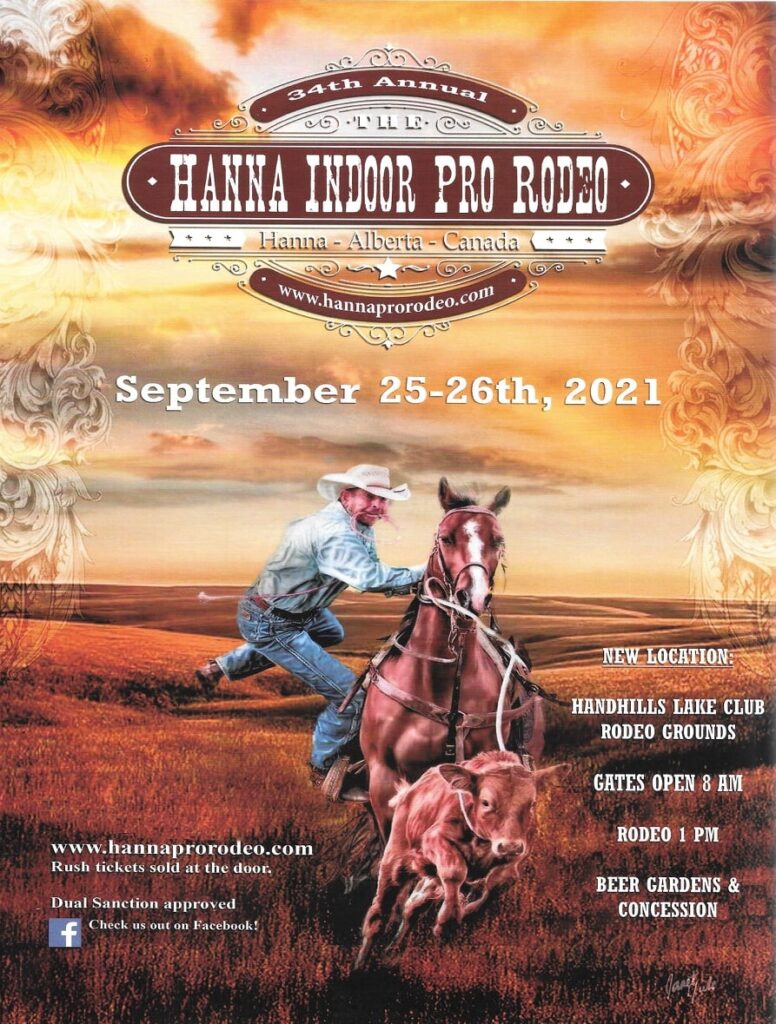
Review and photos by Levi Kettner
On September 25th, the rodeo grounds of the Edmonton Expo Center’s Hall D sat quiet and lifeless. The grand arena, which seats 4,600 guests, was to host the inaugural Edmonton Pro Rodeo—our city’s first Pro Rodeo since the CFR packed their saddlebags and headed down south to the warmer tropics of Donut Mill City.
As cases of the Corona virus tracked upwards and new provincial regulations were imposed, the venue and C5 Rodeo—the event’s organizers—made the “difficult decision” to cancel the weekend’s festivities. So the hall was left abandoned. No hooves kicked up dust, no lassoes were tossed, and not a barrel tipped over. But, worst of all, there wouldn’t be the single, smallest, slightest hint of a yee-haw.
So, eager as I was to attend my first rodeo as an adult, I packed my finest plaid shirt and, like the CFR, pointed my steed south, but a little farther, chasing rumours of a rodeo and clear skies all the way to the promised land: the birthplace of Nickelback—Hanna, Alberta.
The town of Hanna is nestled somewhere between the arid hilltops of the Albertan badlands and the flat horizons of the Saskatchewan prairies. Every year the town hosts the Hanna Indoor Pro Rodeo—a two-day event that draws professional cowboys and cowgirls from across not only Alberta but Canada and the United States as well.
At the beginning of September, in anticipation of upcoming restrictions, the organizers pre-emptively relocated the rodeo to an outdoor venue located on the edge of Hand Hills Lake, a thirty-minute drive from the townsite. This proactivity meant that the Hanna Pro Rodeo could commence, while the much larger Edmonton Pro Rodeo had to postpone its inauguration to next year.
The drive from Edmonton, in total, lasted about three hours—or, as in my case, 45 consecutive Corb Lund songs, each of which was carefully selected to induce the proper spirit—and wound between cracked asphalt highways and loose gravel roads deep in the heart of some of Alberta’s most scenic ranch land.
The leaves had begun to change, and the shallow hills took on the colours of a cornucopia’s innards. Maybe I was too eager to see new terrain after almost two years of limited travel, but I felt the drive itself made the trip worthwhile. When the gravel roads became endless, and every passerby began to lift their two fingers from their steering wheel (what I like to call the “rural salute”), I knew I was getting close.
I arrived before noon on the last day of the event, also known as “Championship Sunday,” and parked my small SUV indiscreetly in a long row of lifted trucks on the edge of the rodeo grounds. I was greeted by the smell of horse manure and rusted steel, as well by the occasional head-nod from my fellow rodeo-goers—a sign that my costume for the day had passed the entrance exam.
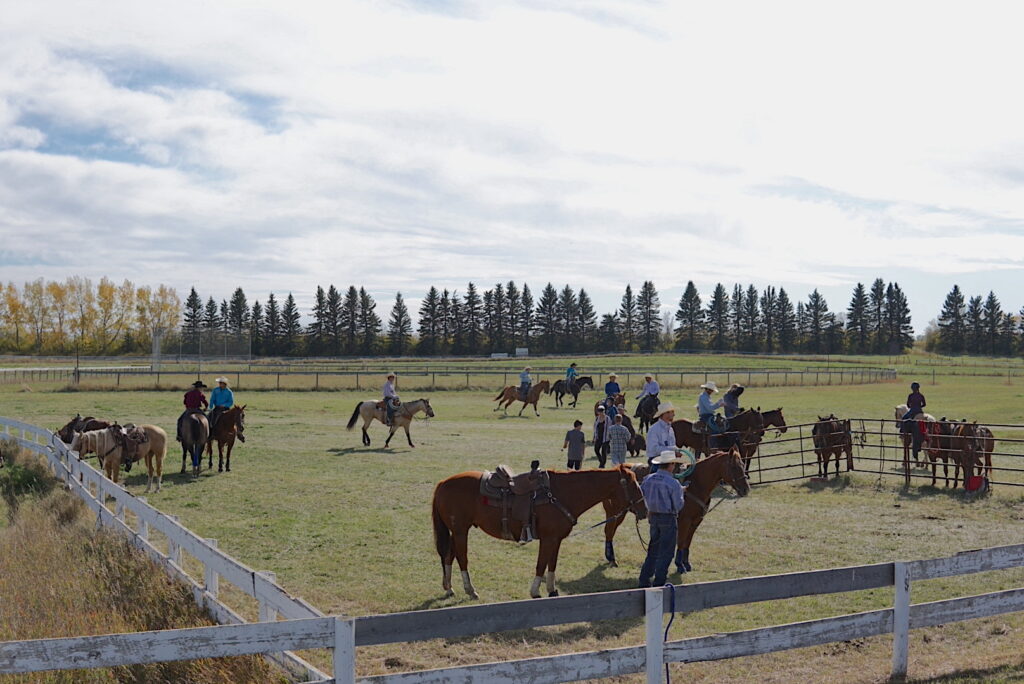
The oval arena was surrounded by bleachers on one side and a hill on the other. The stands began to fill up as 1:00pm approached, the official start time of the competitive events, and spectators lined the hillside with camping chairs to watch the commencements.
The athletes and observers all merged into one; every person in eyesight was dressed in Wrangler jeans, leather boots, and bright plaid shirts—including the rodeo clowns and stand-by paramedics. I sat down in my camping chair on the hill, overlooking the roping chutes, and did my absolute best to blend in.
A young girl, no more than twelve, clad in a skin-tight, sparkling red suit kicked off the rodeo as she rode around the arena on a light brown horse during the singing of “O Canada”.
She stood upright on the seat of the saddle, knees locked straight, while hoisting a Canadian flag with her free hand. After a few laps, the end of the flagpole began to shoot out sparks, sending them flying behind the horse and rider as they galloped towards the gate. In the wake of the anthem, I swear that I could hear tears flowing from the audience, and I understood that I was out of the city and burrowed in the birthplace of the rural Albertan spirit.
Of course, I couldn’t help but think of the ethics of hosting a large gathering during the pandemic, especially when Alberta’s healthcare system was being overwhelmed. Hanna is situated within an electoral riding that recently saw the Conservatives, PPC, and ‘Wexit’ party win more than 85% of the vote. There were very few masks to be seen, and during my entire day, I only saw two signs that asked attendees to social distance—both of which were zip-tied to the arena’s fence and flipped upside-down by the wind. The lack of concern over the virus began to make me feel like I had arrived in a different timeline of a parallel universe—one in which myself and my worries weren’t welcome.
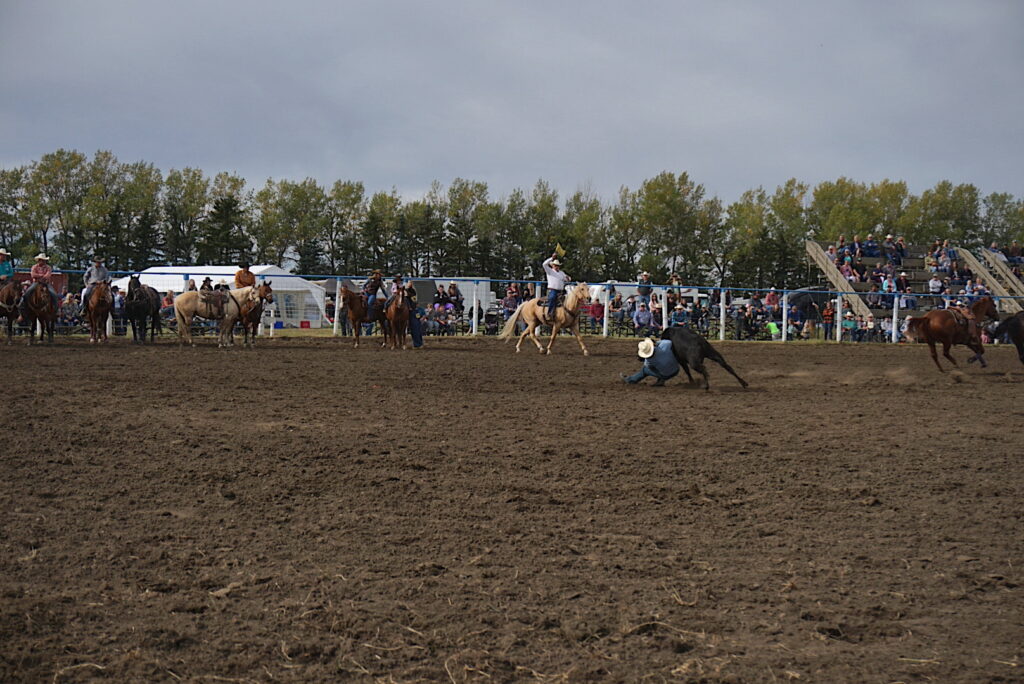
Despite this feeling of separation, I became heavily captivated by the action in the arena. The day progressed through steer wrestling, barrel racing, calf roping, bull riding, and several other events.
I learned that each rodeo event supplied its own breed of athlete. In barrel racing, young, hotshot cowgirls with an undeniable urge for speed and applause dashed around the course with the grace of a ballet dancer and the brute speed of a motorcycle racer—leaving all the lone cowboys in the audience swooning.
Calf roping, also known as tie-down roping, seemed to attract seasoned ranchmen accustomed to the toil of herding cattle. The calf roper’s performance in the arena reflected his athleticism in the sport and his work ethic on the farm. They, like all the athletes, displayed an inexhaustible passion and commitment to their craft. If the cowboy’s knot, holding three of the calf’s legs together, came undone before the mandatory six seconds, they would tip their hat forwards to shadow their reddened face as they walked out of the arena.
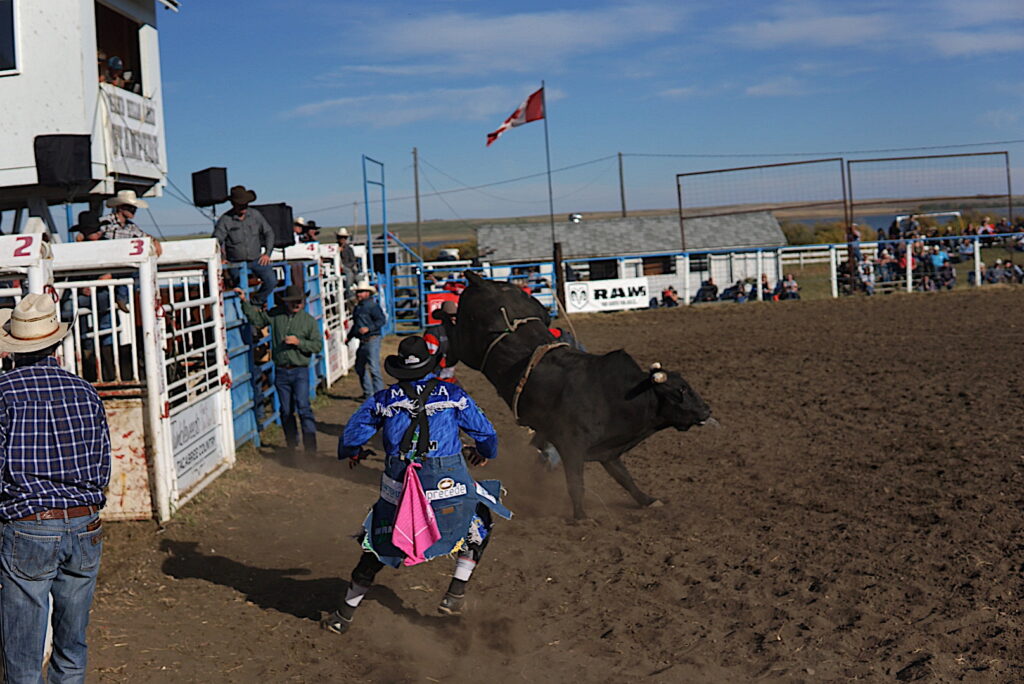
The crowd favourite, and mine as well, was the bull riding category. In this rodeo event, the competitors must straddle a bucking bull for eight seconds, holding nothing but a braided rope with a single hand.
I followed the crowd as we shifted towards the bucking chutes, hoping to get as close to the adrenaline as possible without catching the spray of the bulls’ saliva. After the athletes were tossed across the arena like mashed potatoes in a food fight, the crowd would begin to roar as the cowboys found themselves ass-in-the-dirt and under the gaze of a charging bull. Despite safety equipment and the protection of rodeo clowns, riders rarely left the enclosure without several bruises and torn garments.
The competitiveness among the athletes was visible and exhilarating. Although the rodeo itself is relatively small, especially compared to the plans of the Edmonton Pro Rodeo or the Ponoka Stampede, the athletes are professional and desperate to upgrade their rank in the standings. Every year, the Hanna Rodeo occurs at the tail end of their season. So, for athletes eager to make it into November’s Canadian Finals Rodeo, this small-town event is their last chance at qualifying.
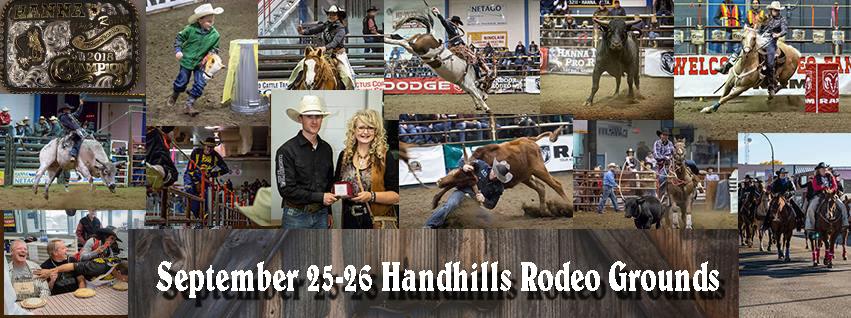
Looking around the arena, it became clear that this was unlike any rodeo I had experienced in my youth. It lacked the theatrics of the Calgary Stampede because it didn’t need them; people weren’t here to see a staged show. There were no teenagers taking selfies with dustless Stetsons, nor were there spectators getting black-out drunk in the beer gardens
These were real, bonafide, belt-buckled cowpeople. They were pursuing not a dream but a literal way of life. At some point, sport became enmeshed with their livelihoods and, because of this, the passion the riders have for the sport, the animals, and each other is palpable from the stands.
Shortly before the end of the rodeo, as one of the last bull riders sorted his positioning in the chute, the voices within the crowd unified and began to sing “Take Me Home, Country Roads”.
The lyrics were carried over Hand Hills Lake, into the empty prairies of the east, and over the arena, towards the urban centres of Alberta in the west. I realized that no matter where I was, a rodeo outside of Hanna or my favourite pub in the centre of the city, there would always be a crowd ready to harmonize John Denver at a moment’s notice.
Back at the gate, out of the way of danger, a five-year-old girl sat on a large, dark brown horse and listened quietly to the crowd sing. And although she was in the distance, buried beneath a cloud of dust, I could imagine Denver’s lyrics becoming impressed in her heart, and I felt that I was witnessing the formation of rural Alberta’s next generation—a culture that no longer seemed so intangible and distant.
Hanna Indoor Rodeo Facebook page

